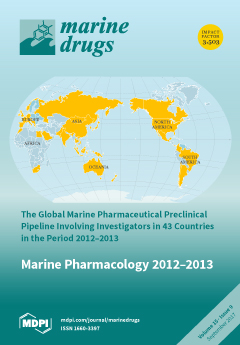The supernatants (the solution part received after centrifugation) of squid pens fermented by four species of
Paenibacillus showed potent inhibitory activity against α-glucosidases derived from yeast (79–98%) and rats (76–83%). The inhibition of acarbose—a commercial antidiabetic drug, used against yeast and rat α-glucosidases—was tested for comparison; it showed inhibitory activity of 64% and 88%, respectively. Other chitinolytic or proteolytic enzyme-producing bacterial strains were also used to ferment squid pens, but no inhibition activity was detected from the supernatants.
Paenibacillus sp. TKU042, the most active α-glucosidase inhibitor (aGI)-producing strain, was selected to determine the optimal cultivation parameters. This bacterium achieved the highest aGI productivity (527 µg/mL) when 1% squid pens were used as the sole carbon/nitrogen source with a medium volume of 130 mL (initial pH 6.85) in a 250 mL flask (48% of air head space), at 30 °C for 3–4 d. The aGI productivity increased 3.1-fold after optimization of the culture conditions. Some valuable characteristics of
Paenibacillus aGIs were also studied, including pH and thermal stability and specific inhibitory activity. These microbial aGIs showed efficient inhibition against α-glucosidases from rat, yeast, and bacteria, but weak inhibition against rice α-glucosidase with IC
50 values of 362, 252, 189, and 773 µg/mL, respectively. In particular, these aGIs showed highly stable activity over a large pH (2–13) and temperature range (40–100 °C). Various techniques, including: Diaoin, Octadecylsilane opened columns, and preparative HPLC coupled with testing bioactivity resulted in isolating a main active compound; this major inhibitor was identified as homogentisic acid (HGA). Notably, HGA was confirmed as a new inhibitor, a non-sugar-based aGI, and as possessing stronger activity than acarbose with IC
50, and maximum inhibition values of 220 μg/mL, 95%, and 1510 μg/mL, 65%, respectively. These results suggest that squid pens, an abundant and low-cost fishery processing by-product, constitute a viable source for the production of antidiabetic materials via fermentation by strains of
Paenibacillus. This fermented product shows promising applications in diabetes or diabetes related to obesity treatment due to their stability, potent bioactivity, and efficient inhibition against mammalian enzymes.
Full article






